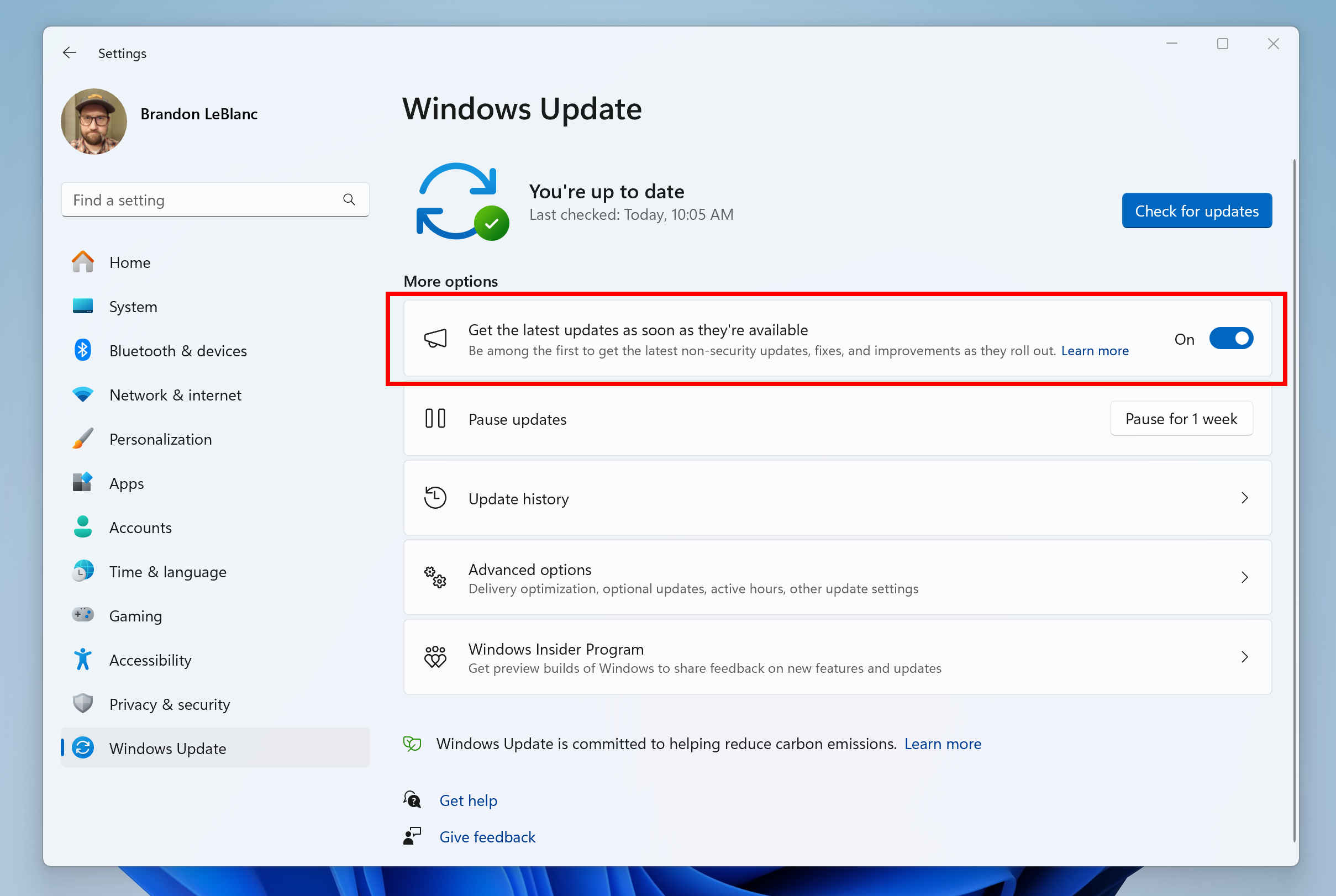To access Active Directory in Windows 11, open the “Server Manager” and then click on “Add roles and features.” Once the wizard opens, select the option for “Active Directory Domain Services” and follow the prompts to complete the installation and configuration.
Accessing Active Directory in Windows 11 is a critical task for administrators managing network resources in an organization. Active Directory serves as the central repository for managing user accounts, enforcing security policies, and organizing resources. By understanding the process to access and utilize Active Directory in Windows 11, administrators can effectively manage user access, group policies, and other network-related tasks.
We will guide you through the simple steps to access Active Directory in Windows 11, ensuring you have the necessary tools to streamline network management and security.
Understanding Active Directory
The Active Directory is an essential component of the Windows operating system, allowing users to access resources, manage permissions, and perform other administrative tasks. Understanding the basic concepts and key components of Active Directory is crucial for efficiently navigating and utilizing its functionalities.
Basic Concepts Of Active Directory
Basic concepts of Active Directory refer to the fundamental principles that form the foundation of its functionality. These concepts include:
- The hierarchical structure of the directory.
- User accounts and groups.
- Authentication and authorization mechanisms.
- Domain structure and domain controllers.
Key Components Of Active Directory
Key components of Active Directory are vital for understanding how it operates and what makes it effective. These components include:
- Domains: Organizational units that manage resources and security.
- Domain Controllers: Servers responsible for authenticating users and enforcing security policies.
- Organizational Units: Containers for organizing and managing objects within a domain.
- Trust Relationships: Establishing secure connections between domains for resource access.
Setting Up Active Directory In Windows 11
Setting up Active Directory in Windows 11 allows you to efficiently manage and secure user accounts, resources, and devices within your network. By following the simple installation and configuration steps, you can gain access to the powerful features of Active Directory, streamlining administrative tasks and enhancing security.
Installation Process
To begin the process of setting up Active Directory in Windows 11, follow these straight-forward installation steps:
- Open the Start Menu and select ‘Settings’.
- Choose ‘Apps’ from the list of options.
- Click on ‘Optional Features’ and then select ‘Add a feature’.
- Look for ‘Active Directory Lightweight Directory Services Tools’ and check the box next to it.
- Click ‘Install’ to begin the installation process.
Configuration Steps
Once the installation is complete, proceed with the following configuration steps:
- Go to the Start Menu, type ‘Control Panel’, and open it.
- Select ‘Programs’ and then ‘Turn Windows features on or off’.
- Check the box next to ‘Active Directory Lightweight Directory Services’ and click ‘OK’.
- Follow the prompts to complete the installation of the feature.
- Restart your computer to apply the changes.
Managing Active Directory
Active Directory in Windows 11 offers powerful tools for managing user accounts, groups, permissions, and security settings. By effectively utilizing these features, administrators can ensure smooth operation and security within their network system.
User And Group Management
- Create and customize user accounts within Active Directory.
- Assign different roles and permissions to users based on their responsibilities.
- Organize users into groups for easier management and access control.
Permission And Security Settings
- Define access control through permissions for users and groups.
- Restrict access to sensitive data by setting security policies.
- Regularly review and update security settings to prevent unauthorized access.
Advanced Features And Functionalities
Integration With Azure Ad
Windows 11 offers seamless integration with Azure Active Directory (Azure AD), allowing organizations to leverage the power of cloud-based identity and access management. With this integration, you can easily sync your on-premises Active Directory with Azure AD, extending your directory services to the cloud.
Through Azure AD integration, you gain several benefits, including centralized identity management, enhanced security, and simplified administration. This integration enables smooth user authentication and authorization processes, ensuring that users have appropriate access to resources within your network and cloud-based applications.
Furthermore, Azure AD provides features such as single sign-on (SSO), multi-factor authentication (MFA), and conditional access policies, offering robust security measures to protect your organization’s data and resources. By seamlessly integrating Azure AD with Windows 11, you can enjoy these advanced security capabilities, ensuring high-level protection for your network.
Implementing Group Policies
Group Policies empower administrators to control and configure various aspects of user and computer settings within Active Directory. Windows 11 provides a comprehensive set of group policy settings, enabling fine-tuned management of your network environment.
With group policies, you can enforce security policies, set up and manage user preferences, define software installation and updates, configure network access controls, and more. These policies ensure standardization and consistency across your organization, simplifying administrative tasks and ensuring compliance with regulatory requirements.
Windows 11 offers an intuitive Group Policy Management Console (GPMC) that allows you to easily create, deploy, and manage group policies. Through the GPMC, administrators can efficiently organize policies, filter settings, and delegate management responsibilities.
By leveraging the advanced group policy features in Windows 11, you can streamline administration, increase operational efficiency, and maintain a secure and compliant network environment.
Troubleshooting Common Issues
While accessing Active Directory in Windows 11 can be a smooth experience, you may encounter some common issues along the way. Thankfully, there are troubleshooting tools and techniques available to help you overcome these challenges. In this section, we will explore some handy tools and delve into the commonly encountered error messages that you might face. Let’s get started!
Troubleshooting Tools
When encountering issues with accessing Active Directory in Windows 11, the following troubleshooting tools can greatly assist you in diagnosing and resolving the problem:
| Tool | Description |
|---|---|
| Event Viewer | The Event Viewer provides detailed logs of system events, including any Active Directory errors, which can help in identifying the cause of the issue. |
| Active Directory Diagnostics Data Collector Set | This built-in Windows tool collects comprehensive diagnostic information related to Active Directory, aiding in troubleshooting and identifying potential problems. |
| DCDiag | DCDiag is a command-line utility that tests various aspects of domain controller functionality, such as replication, DNS configuration, and overall health of the Active Directory environment. |
Common Error Messages
When accessing Active Directory in Windows 11, you might encounter several error messages that signify specific issues. Familiarizing yourself with these common error messages can help you troubleshoot and resolve the problem efficiently. Here are a few examples:
- “The network path was not found”: This error typically indicates a connectivity issue between your computer and the domain controller. Check network settings, firewall configurations, and DNS resolution to ensure proper communication.
- “The user name or password is incorrect”: This error suggests that the supplied credentials are either invalid or have insufficient privileges to access the Active Directory. Double-check the username and password, ensuring they are correct and have appropriate permissions.
- “The trust relationship between this workstation and the primary domain failed”: This error commonly occurs when a computer’s trust relationship with the domain has been broken. You can try rejoining the computer to the domain or resetting the secure channel using the NETDOM command for resolution.
By familiarizing yourself with these common error messages and utilizing the aforementioned troubleshooting tools, you can efficiently resolve issues and gain seamless access to Active Directory in Windows 11. Happy troubleshooting!

Credit: blogs.windows.com
Enhancing Security In Active Directory
Best Practices For Security
Ensure strong password policies are in place.
Enable multi-factor authentication for added security layer.
Regularly monitor and audit user activities.
Preventing Unauthorized Access
Implement role-based access control to limit permissions.
- Restrict access to sensitive directories.
- Regularly review and update access rights.
Utilize firewalls and encryption to secure data transmission.
Set up intrusion detection systems to detect unauthorized attempts.
Future Trends And Innovations
As technology continues to evolve, it’s crucial to stay ahead of the curve by understanding the future trends and innovations in accessing Active Directory in Windows 11. This article will explore the role of Active Directory in modern IT environments and make predictions for its future within the Windows 11 ecosystem.
Role Of Active Directory In Modern It Environments
Active Directory plays a pivotal role in modern IT environments by providing a centralized framework for managing user accounts, resources, and security. It serves as a foundation for implementing security policies, managing permissions, and organizing a network’s infrastructure. With the growing reliance on digital platforms, Active Directory’s role has become increasingly critical in ensuring efficient and secure access to network resources.
Predictions For Active Directory In Windows 11
- Enhanced Integration: Windows 11 is expected to further streamline the integration of Active Directory with new and existing technologies, enabling a more seamless user experience.
- Advanced Security Features: Predictions indicate that Windows 11 will introduce enhanced security features within Active Directory, addressing evolving cybersecurity challenges and threats.
- Cloud Integration: With the shift towards cloud-based services, Active Directory in Windows 11 is anticipated to offer increased integration capabilities with cloud platforms, enhancing accessibility and scalability for organizations.
- Adaptation to Remote Work: The future of Active Directory in Windows 11 is likely to see adaptations to support the growing trend of remote work, providing solutions for secure access and management of resources from diverse locations.

Credit: blogs.windows.com

Credit: support.microsoft.com
Conclusion
Incorporating Active Directory in Windows 11 can streamline system management tasks efficiently. By following the steps outlined in this guide, you can seamlessly access and leverage the benefits of Active Directory. Stay updated with the evolving technology landscape to maximize the potential of Windows 11.








